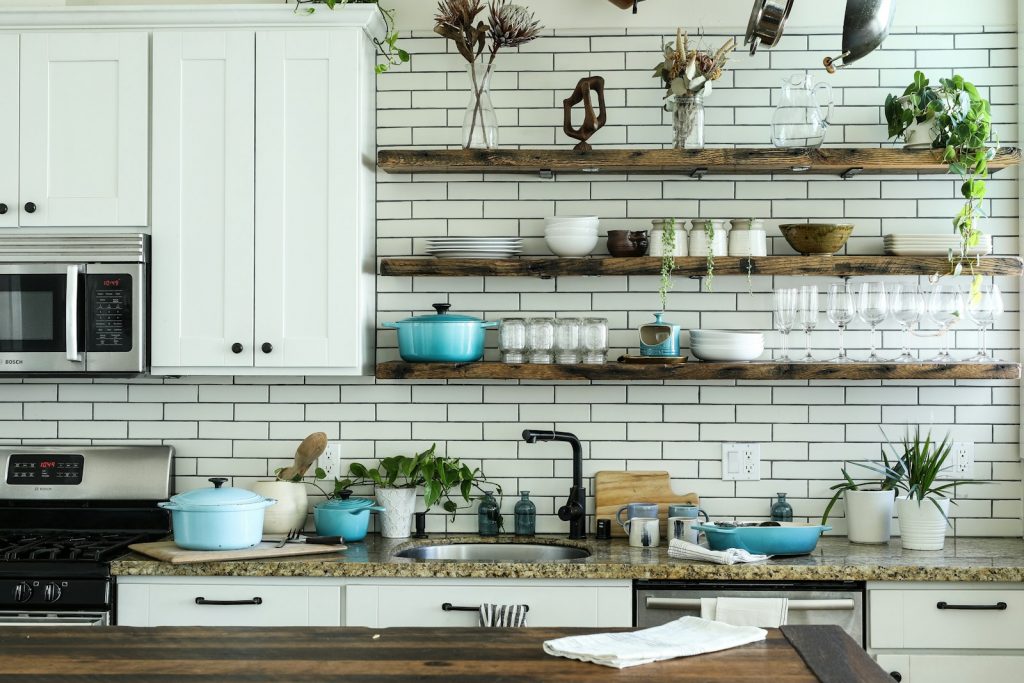Is “What’s for dinner?” a daily source of stress? Do you often find yourself throwing out wilted produce or forgotten leftovers? If so, smart meal planning might just be the superhero your eco friendly kitchen needs. Not only does it save you time and money, but it’s also one of the most effective strategies to stop food waste in your kitchen.
Globally, a staggering amount of food produced for human consumption is lost or wasted. In our homes, this often translates to good intentions turning into spoiled food in the back of the fridge. But with a little forethought and a good plan, you can significantly reduce the amount of food your household throws away.
(For a broader look at creating a green kitchen, visit our cornerstone guide: “The Ultimate Guide to an Eco-Friendly Kitchen (for Beginners & Families)“. And for more immediate waste-cutting actions, check out “15 Easy Eco-Friendly Kitchen Swaps to Reduce Waste Today” and “A Beginner’s Guide to Composting Kitchen Scraps (Even in Small Spaces)“.)
Why is Meal Planning a Game-Changer for Reducing Food Waste?
- Buy Only What You Need: A clear plan means a focused grocery list, preventing impulse buys and over-purchasing of perishable items.
- Utilize Ingredients Fully: You can plan meals that use up ingredients across several dishes, ensuring nothing gets left behind.
- Reduces Spoilage: Knowing how and when you’ll use an ingredient means it’s less likely to spoil before you get to it.
- Saves Money: Less wasted food means less wasted money.
- Reduces Kitchen Stress: Knowing what you’re cooking each day eliminates last-minute panic and reliance on less healthy or more wasteful takeout options.
- Encourages Variety & Healthier Eating: Planning allows you to incorporate a wider range of foods and balanced meals.
Your Step-by-Step Guide to Smart Meal Planning:
- Take Inventory (The “Shop Your Kitchen First” Approach):
- Before you even think about recipes, look through your fridge, freezer, and pantry.
- What needs to be used up soon? Note down perishable items like produce, dairy, and meats.
- This is the foundation of your meal plan – build around what you already have.
- Consult Your Calendar:
- How many meals do you need to plan for? (Breakfast, lunch, dinner, snacks)
- Are there any evenings you’ll be eating out or have commitments that affect cooking time?
- Adjust your plan based on your schedule – some nights might call for quick 30-minute meals, others might allow for more elaborate cooking.
- Gather Inspiration & Choose Recipes:
- Flip through your favorite cookbooks, browse online recipe sites, or revisit family favorites.
- Choose recipes that utilize the ingredients you already have on hand.
- Consider “theme nights” to simplify choices (e.g., Meatless Monday, Taco Tuesday, Pasta Night).
- Think about dishes that can create intentional leftovers for lunches or another dinner (cook once, eat twice!).
- Plan for Versatility & “Cross-Utilization”:
- If a recipe calls for half a head of cabbage, what will you do with the other half? Plan another meal that uses it.
- Roast a whole chicken on Sunday? Use leftover chicken for salads, tacos, or soup later in the week.
- Cook a large batch of grains (rice, quinoa) to use as a side for multiple meals.
- Write It Down:
- Use a notebook, a whiteboard, a digital app, or a printable meal planner.
- List the days of the week and the meals you plan for each.
- This visual reminder keeps you on track.
- Create Your Grocery List (Based on Your Plan & Inventory):
- Go through your chosen recipes and list ONLY the ingredients you don’t already have.
- Organize your list by store section (produce, dairy, pantry) to make shopping more efficient.
- Specify quantities to avoid overbuying. Stick to your list!
- Prep Ahead (Optional but Highly Recommended):
- Once you’ve shopped, dedicate an hour or two to prepping ingredients.
- Wash and chop vegetables, cook grains, marinate meats, or make a batch of salad dressing.
- This makes weeknight cooking much faster and less daunting.
- Be Flexible & Embrace Leftovers:
- Life happens! Don’t be afraid to swap meals around if needed.
- Designate a “leftover night” or plan for lunches using dinner leftovers.
- Get creative with transforming leftovers into new dishes (e.g., leftover roasted veggies into a frittata). (And learn how to store them effectively in our upcoming guide: “Storing Produce Without Plastic: Tips for a Fresher, Greener Kitchen”).
Tips for Meal Planning Success & Food Waste Prevention:
- Start Small: If planning a whole week feels overwhelming, start with 3-4 days.
- “Eat Me First” Box/Shelf: Designate a spot in your fridge for items that need to be used up quickly.
- Understand Date Labels: “Best before” is about quality, not safety. “Use by” is about safety. Learn the difference to avoid throwing out perfectly good food.
- Proper Food Storage is Key: Store fruits, vegetables, and other perishables correctly to extend their life. (We’ll dive deep into this in a future article!)
- Embrace Your Freezer: Freeze leftovers, extra ingredients, or produce that’s about to go bad. Label everything clearly with the item and date.
- Track Your Waste: For a week or two, note down what food you do throw away. This will highlight areas for improvement in your planning and shopping.
- Involve the Family: Get input on meal ideas to increase buy-in and reduce picky eating.
By incorporating smart meal planning into your routine, you’ll not only master your kitchen schedule and budget but also make a significant contribution to reducing food waste. It’s a powerful skill that benefits your household and the planet, making your kitchen a truly more sustainable space.


